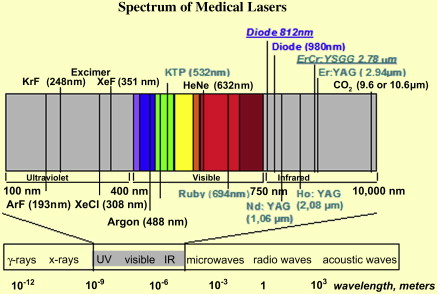Laser technology has become preeminent in the evolution of appearance enhancements. Dentistry has seen a huge breakthrough with the introduction of a combination hard-soft tissue erbium wavelength. The conservative nature of this technique has created a firm footing in the antiaging trend that is spanning the globe. Among the many benefits of this technique are less invasive care and quicker healing responses. In this article, conservative laser and cosmetic modalities are discussed that allows a clinician to be more comfortable in buying a soft/hard tissue laser and also to more quickly become adept with implementing these techniques.
Laser technology has become preeminent in the evolution of appearance enhancements. Dentistry has seen a huge breakthrough with the introduction of a combination hard-soft tissue erbium wavelength. The conservative nature of this technique has created a firm footing in the antiaging trend that is spanning the globe. Among the many benefits of this technique are less invasive care and quicker healing responses. Furthermore, these techniques can allow a cosmetic dentist to control gingival and osseous contours with added artistry in the pursuit of esthetic dental principles and more efficient use of patient time; thus raising customer service experiences.
In this article, conservative laser and cosmetic modalities are discussed that allows a clinician to be more comfortable in buying a soft/hard tissue laser and also to more quickly become adept with implementing these techniques.
Historical laser background
In 1960, Theodore Maiman, a scientist with Hughes Aircraft Corporation, developed the first working laser, emitting energy from a ruby crystal. This same technology was applied to teeth by Dr Leon Goldman in 1965, causing painless surface crazing of enamel. In the 1970s and 1980s, researchers attempted using other media, such as CO 2 (wavelength 10,600 nm), to better treat soft and hard dental structures. In 1987, the Food and Drug Administration (FDA) approved Myers and Myers’ Nd:YAG laser for commercial purposes to treat dental soft tissues. Three years later, the Kavo Key Laser (Kaltenbach and Voight GmbH and Co, Biberach/ Ris, Germany) introduced successful hard tissue treatment to German dentistry using an erbium:yttrium-aluminium-garnet system (ER:YAG, wavelength 2940 nm). It was not until 1997 that the FDA cleared use of this breakthrough in the United States for caries removal, cavity preparation, and tooth conditioning. With the introduction of the ErCr:YSGG wavelength (erbium, chromium: yttrium-scandium-gallium-garnet, 2780 nm), dentists had the ability to precisely alter bone and dental hard tissues, as well as perform some minor soft tissue modifications. A visual perspective of the many choices in laser wavelengths is shown in Fig. 1 .





